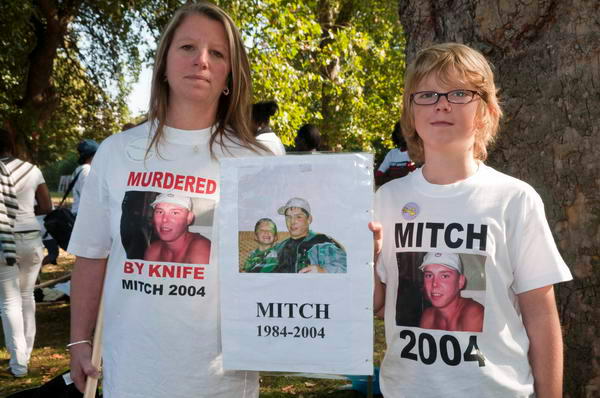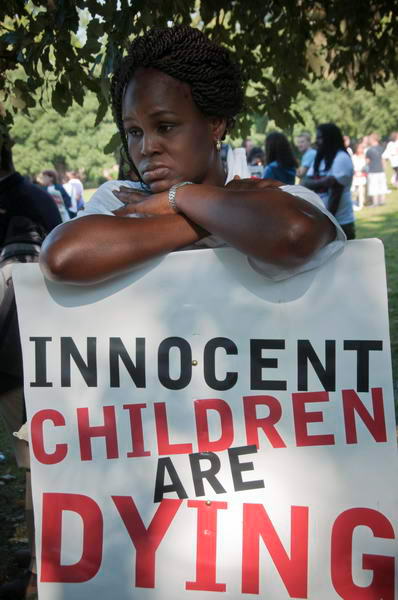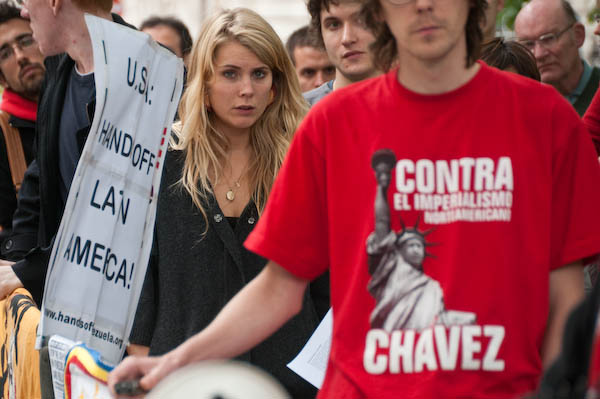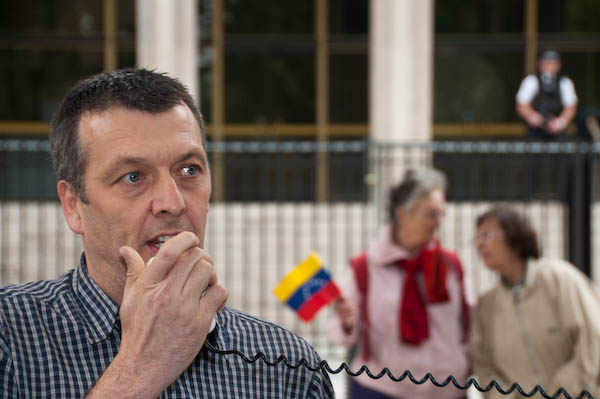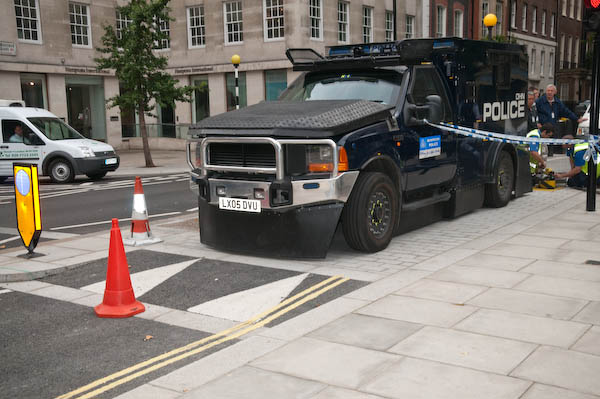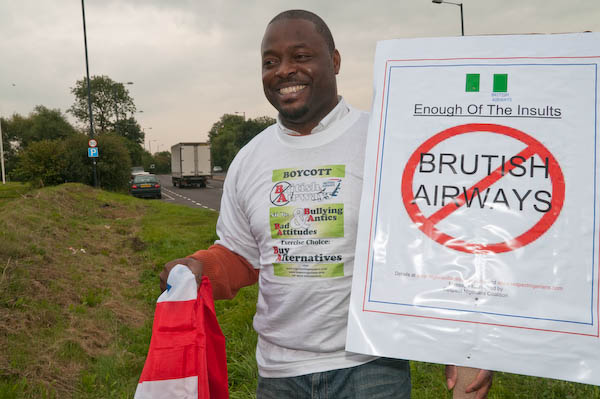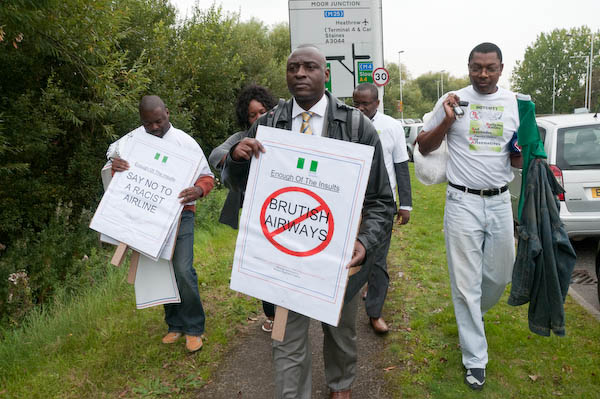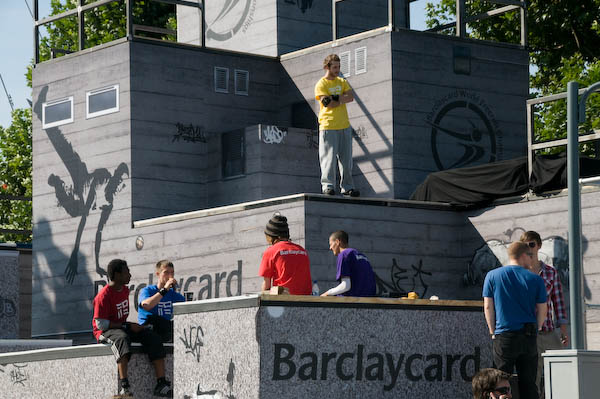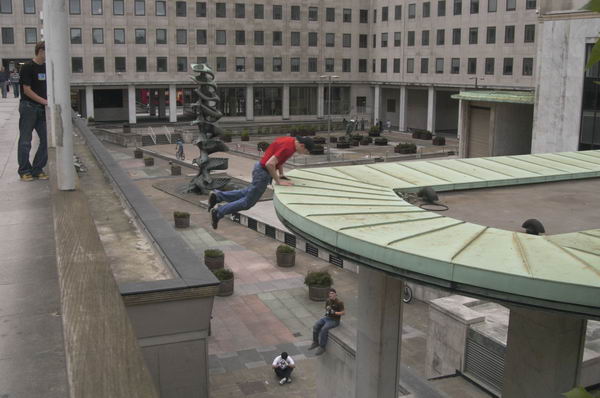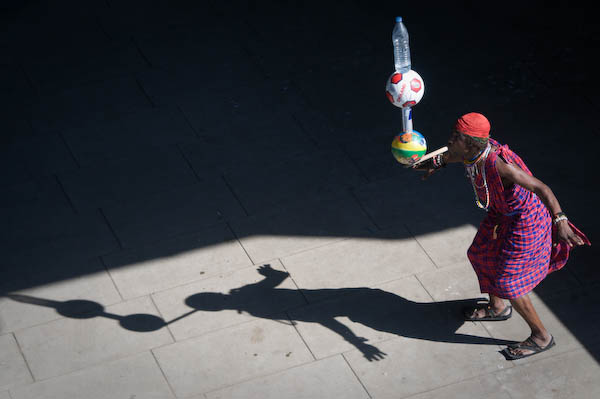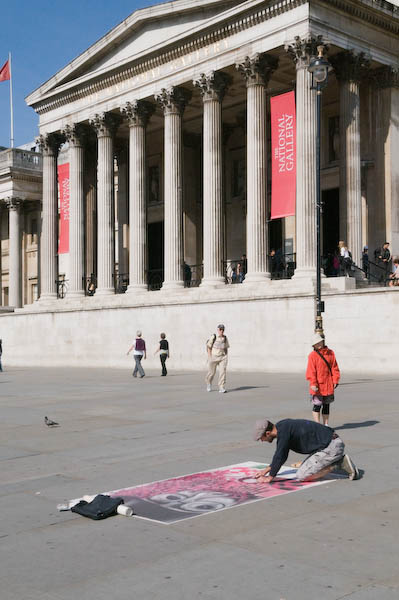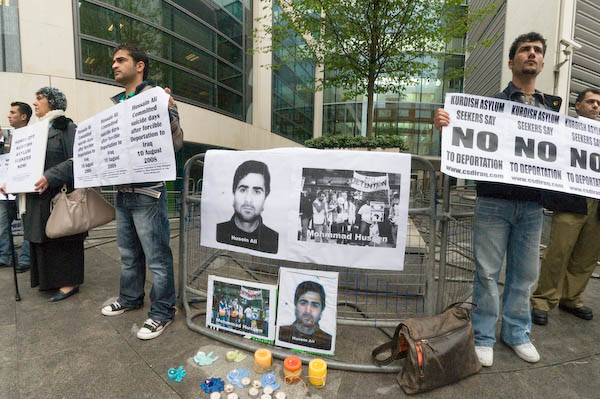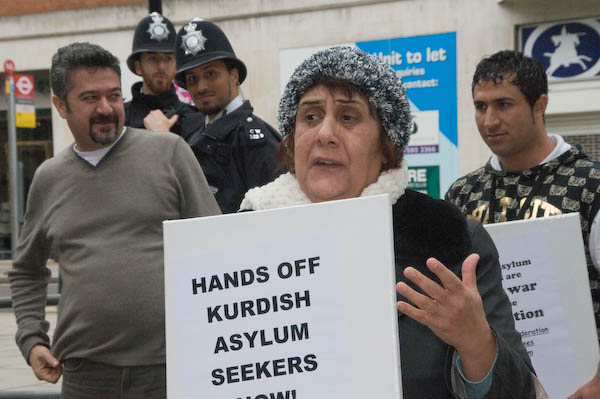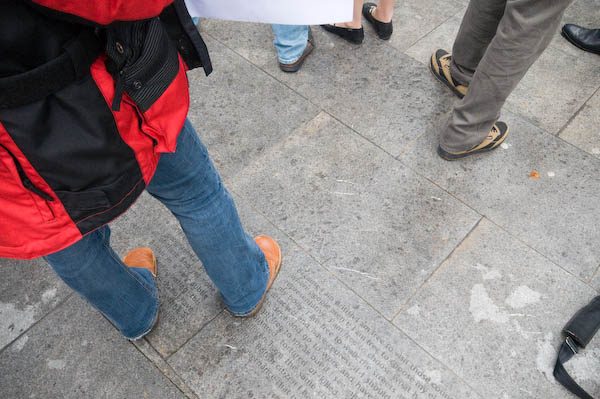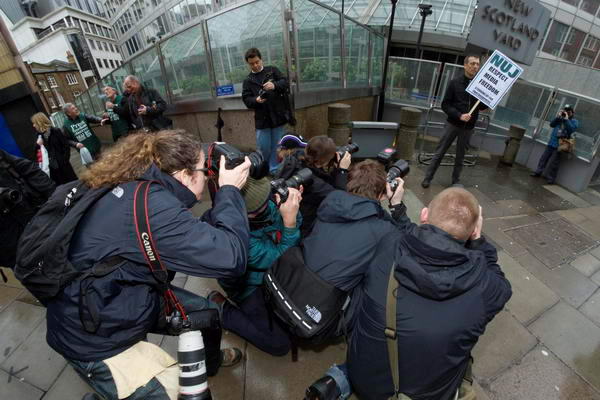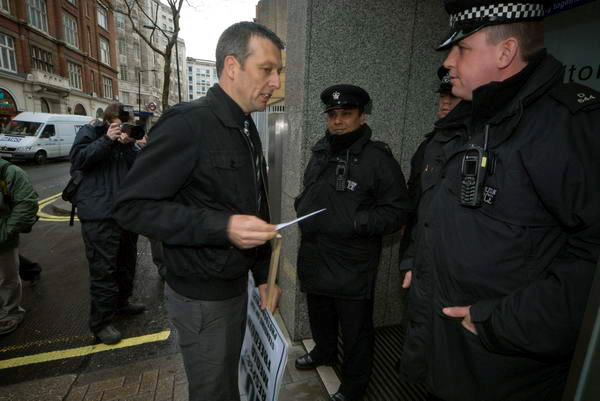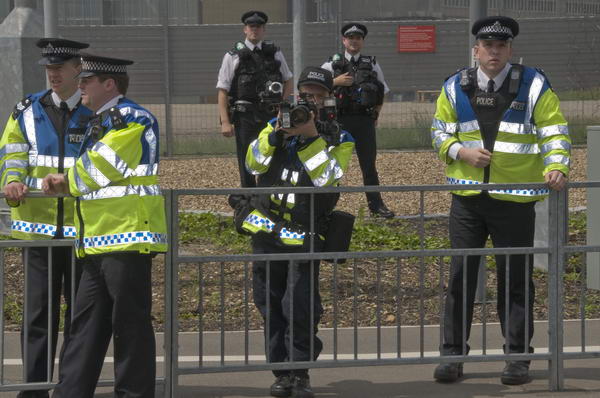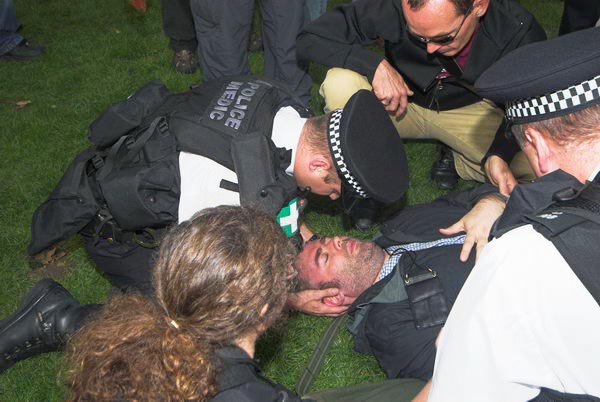Last Saturday I went on a ‘Merchants of Death‘ walking tour led by members of the London branch of the Campaign Against the Arms Trade (CAAT) which visited the offices of companies involved in selling arms and providing mercenaries. It isn’t surprising, given the nature of their businesses and the close relationship that they have with the government and various ministries that many arms companies choose to have the corporate offices within easy reach of parliament and the government offices clustered around Westminster. Although as you can see from the map which includes the sites that we visited, there are more scattered around the London area.
Its perhaps also not surprising that the vast majority of those who walk past these buildings would have no inkling of what goes on inside them – in many cases there was no indication at all of what went on there. Others did have their name small to label one of the several bells, but nowhere was there anything that would reveal their secrets to the casual passer-by. It was as if they were ashamed of what they are doing (but not ashamed enough to stop them making massive profits from wars and unrest.)
Our first call was at the UK Corporate HQ of Lockheed Martin in Manning House, 22 Carlisle Place. They are the largest arms manufacturer in the world and apparently the senior partner in the Atomic Weapons Establishment, Aldermaston, who will make huge profits from the replacement for Trident.
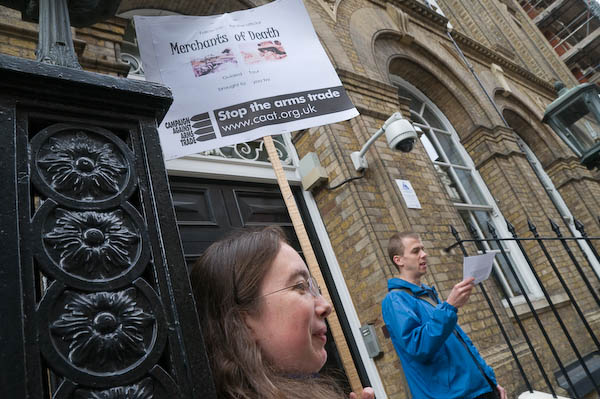
There was no indication about the organisations that work here on the building, which for around 25 years at the end of the nineteenth century was the house of Cardinal Manning, Archbishop of Westminster. It’s rather a nice building and gets a few lines in Pevsner‘s Westminster volume.
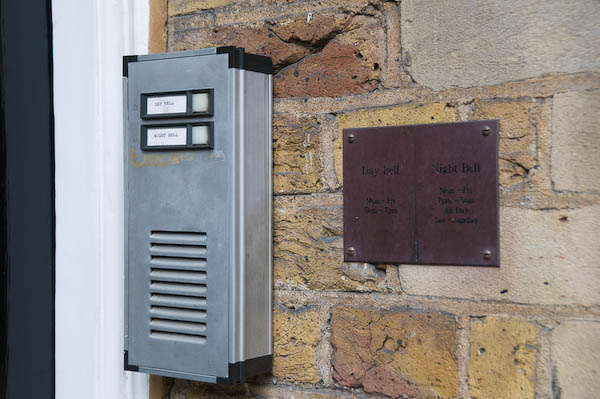
The bells just say ‘Night’ and ‘Day’. No mention of arms, devastation and hell.
Our next stop, the offices of Aegis Defence Services, was inside the SOCPA zone. The walk organisers had been contacted by police, asking if they would like to apply for permission for a demonstration, but they had declined to do so on the grounds that a walking tour was not a demonstration. As we stood outside the offices of this private military and security company (shared with various others at 39 Victoria St) opposite New Scotland Yard, two police officers rode up on bicycles. They seemed very relieved to be told we were a not a demonstration and jumped back on their bikes and rode away almost before they arrived!
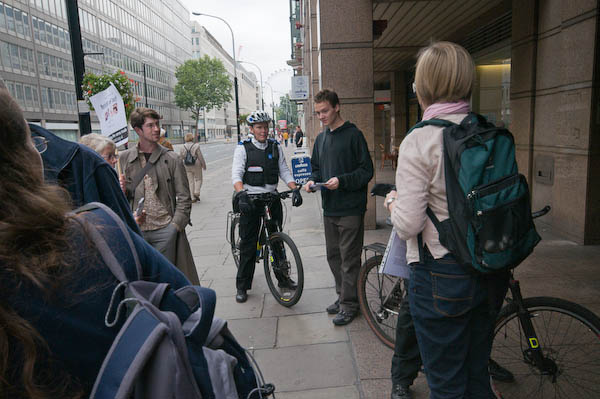
The walk then led up Buckingham Gate, with stops at Rolls Royce (65), QinetiQ (85), Aromor Group (25-28) and General Dynamics (11-12)
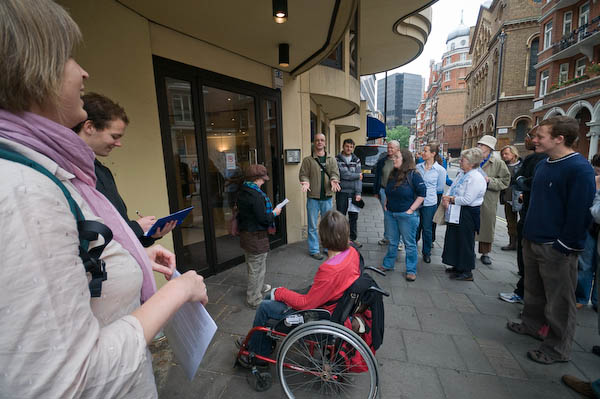
QinetiQ produced scandalously huge returns for the Carlyle Group – including George Bush Sr and James Baker
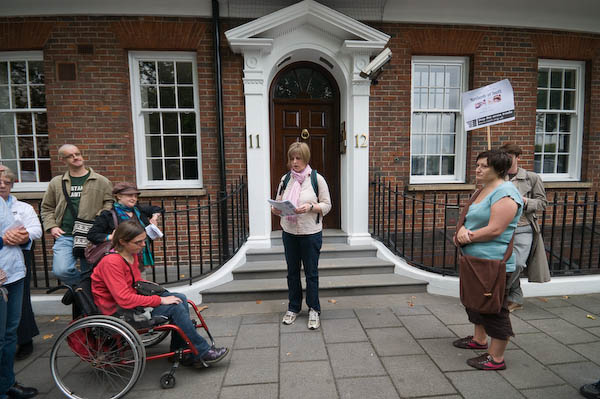
General Dynamics, the 6th largest defence company in the world started as The Holland Torpedo Boat Company, building the US Navy’s first submarine.
Crossing to go in front of Buckingham Palace, we were stopped by police who objected to the poster being carried at the front of the march. After a short discussion we were allowed to go on so long as this poster was not held up while we were in the park.
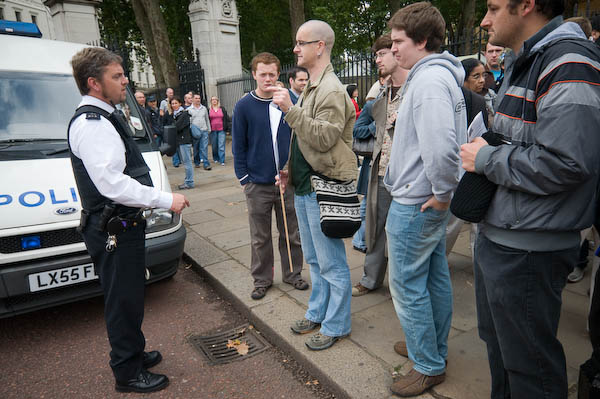
You can’t carry placards in the park
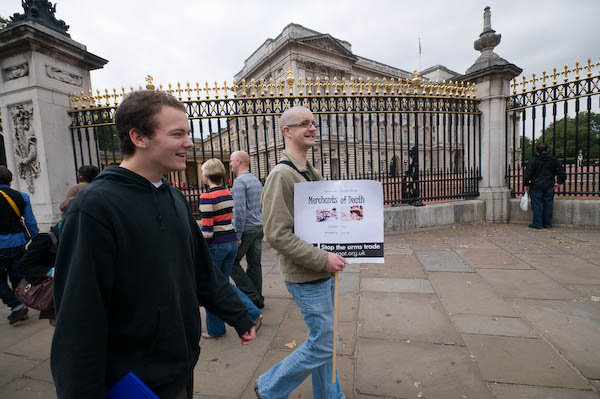
unless you hold them down
In St James we apparently visited Boeing UK, though their offices at 16 St James St seemed nameless,
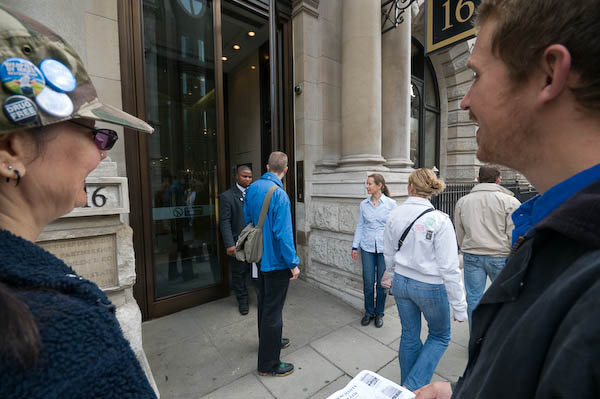
The security man just wanted to make sure we kept off the premises
and an equally anonymous Northorp Grumman at 16 Charles II St, before going back to visit BAe Systems at 6 Carlton Gardens
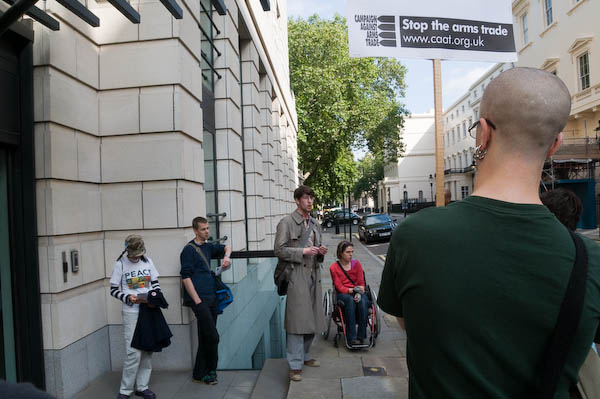
and then finishing at Matra BAe at 11 Strand.
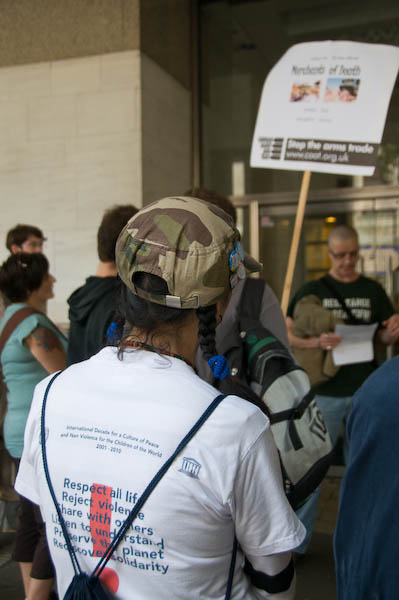
You can find more about the activities of most of these companies at the CAAT web site and also from War on Want, who have a Corporations & Conflict page and you can also download their report on Corporate Mercenaries along with much other relevant material.
More pictures from the event on My London Diary.
